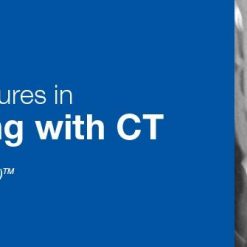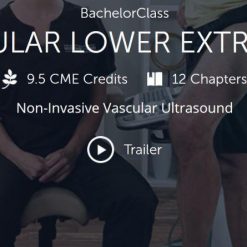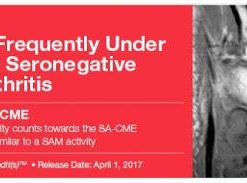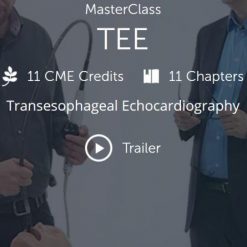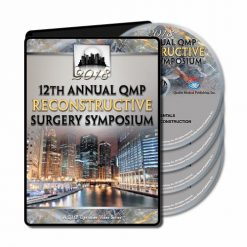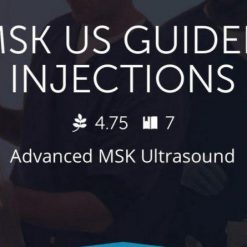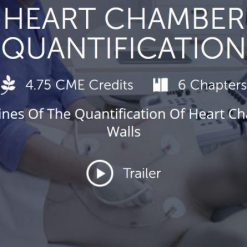ECG ACADEMY 2020
$30
ECG ACADEMY 2020
Format: 584 Videos
YOU WILL GET THE COURSE VIA LIFETIME DOWNLOAD LINK (FAST SPEED) AFTER PAYMENT
The BETTER Way To Learn Electrocardiograms.
The ECG Academy Learning System was created by a Cardiac Electrophysiologist.
We are recognized as a worldwide leader in basic and advanced EKG training.
Advance Your Career! Become An ECG Expert!
TOP RATED by Online Reviews!
Now With UPGRADED Certificate Courses
APPROVED for 24 Contact Hours for Nurse Practitioners, PAs, and RNs
ECG Academy is utilized by top hospitals and universities across the U.S.
Taught by an award-winning educator and practicing Cardiac Electrophysiologist, Dr. Nick Tullo, the ECG Academy Learning System has provided state of the art EKG training to students
Look at ECGs in a Whole New Light
The physiologic approach to EKG training provided by the ECG Academy Learning System provides you with the tools to interpret complex tracings. Whether you are a beginner or an experienced reader, you can become a resource at your hospital, office or school. Open new doors in your career by becoming an ECG Expert! Become the “Go To” person at work. You can even start a new career as a Telemetry Tech and step right into a high paying position!
Watch the videos and practical “ChalkTalk” videos on any device at any time. Access is provided through a monthly subscription, and you can cancel at any time.
Free Introductory Level
You can register for the FREE Introductory Level, which includes 3 hours of video lessons and ChalkTalks to you get started. It includes anatomy, physiology, ECG basics and interval (PR, QRS, QT) measurements
Comprehensive Training
The Level 1 Course shows you how to analyze cardiac rhythm strips, including basic and advanced arrhythmias. The Level 2 Course teaches you everything you need to read a 12-lead electrocardiogram
Expert Topics
If you are experienced, subscribe to our Expert membership level for access to unique advanced video discussions, 40-minute arrhythmia workshops, and access to over 400 challenging ChalkTalks.
Topics And Speakers:
-Basic/Intermediate level videos
-Advanced level videos
-ChalkTalks
-Live Streams
-Workshop
Topics In More Detail:
More Comprehensive Than Ever
Choose the level of proficiency that you want to reach, based on your current needs and position. Select a membership level from the table below. You can watch the videos as many times as you need. Use the ChalkTalks to reinforce the material and practice applying the skills to unknown tracings. Cancel your membership at any time. Let ECG Academy help you look at ECGs in a Whole New Light!
Syllabus For The Basic Level
INTRODUCTION
- What is the ECG Academy?
ENGINEERING CONCEPTS
- Basic electrical concepts – what is electricity
- Electrical circuits
- How we record electrical events
INTRO TO THE HEART
- Cardiac tissues and electricity
- Cardiac Action Potentials
- 3-D Anatomy of the heart
- Cardiac conduction system
- Electrical events of the heart
ECG RECORDING BASICS
- ECG recording systems
- ECG electrode: correct placement
- ECG electrodes: incorrect placement
- Intrinsic problems with ECG systems: Artifacts
ECG LEAD BASICS
- The basics of ECG “leads”
- Frontal or Limb leads
- Chest or Precordial leads
THE NORMAL ECG
- The ECG signal: First impressions
- Analyzing size and timing/duration of signals
- Determining heart rate
- ECG Interval measurements 1
- ECG Interval measurements 2: Practice
NORMAL SINUS RHYTHM
- Recognizing NSR
- Sinus bradycardia / sinus tachycardia
- Sinus arrhythmia
SINUS NODE DYSFUNCTION
- Sinus bradycardia
- Sinus pause / sinus arrest
- SA Exit Block
AV NODE DYSFUNCTION
- Basic concepts of AV block
- First degree AV block
- Second degree AV block
- Third degree AV block
INTRAVENTRICULAR CONDUCTION DISTURBANCES
- Concepts of intraventricular conduction
- Types of IVCDs
- Functional / Rate-related IVCDs: “Aberrant conduction”
PREMATURE BEATS
- Concepts of premature beats
- Atrial premature beats
- Ventricular premature beats
- Other premature beats
ATRIAL TACHYCARDIA
- Definitions of atrial tachycardia
- Sustained supraventricular tachycardia
- Atrial tachycardia with AV Block
- Atrial tachycardia with aberrant conduction
- Multifocal Atrial Tachycardia / Wandering Atrial Pacemaker
ATRIAL FLUTTER
- Diagnosing atrial flutter
- Atrial flutter with 2:1 conduction
- Unusual forms of atrial flutter
ATRIAL FIBRILLATION
- Introduction to atrial fibrillation
- Examples of atrial fibrillation
- Atrial fibrillation with aberrant conduction
VENTRICULAR TACHYARRHYTHMIAS
- Ventricular tachyarrhythmias – definitions
- Accelerated idioventricular rhythm
- Monomorphic ventricular tachycardia
- Polymorphic VT / ventricular fibrillation
- Approach to Wide Complex Tachycardia
PACEMAKERS
- Introduction to Permanent Pacemakers
- Basic Pacemaker Troubleshooting
- Dual-Chamber Pacemakers
- Advanced Pacemaker Troubleshooting
Syllabus For The Advanced Level
VECTORS AND ECG AXIS
- Physiology of the QRS axis
- Determining the axis
- Causes of axis deviation
- Other axis considerations / anatomical regions
ATRIAL ABNORMALITIES
- P-wave axis
- Left atrial abnormality
- Right atrial abnormality / Biatrial abnormality
HYPERTROPHY
- Left ventricular hypertrophy
- Right ventricular hypertrophy
BUNDLE BRANCH BLOCKS
- Right bundle branch block
- Left bundle branch block
- Other IVCDs
HEMIBLOCKS
- Introduction to hemiblocks
- Left anterior hemiblock
- Left posterior hemiblock / septal hemiblock
- Bifascicular block
ISCHEMIC HEART DISEASE
- Coronary anatomy and physiology
- Coronary events and the ECG
- Ischemia and myocardial infarction
- More examples of ischemia and infarction
OTHER ST ABNORMALITIES
- “Secondary” ST abnormalities
- “Primary” and non-specific ST abnormalities
- Pericarditis and early repolarization
MISCELLANEOUS TOPICS IN ELECTROCARDIOGRAPHY
- Low voltage / Lead reversal
- Electrolyte / metabolic disturbances
- Putting It All Together: Approach to 12-Lead ECGs
Syllabus for the Expert Level
Note: Not all topics are be available. Topics in light blue will be released in the future.
BASICS OF ELECTROPHYSIOLOGIC TESTING
- Introduction to Electrophysiologic Testing
- EP Electrograms
- His Bundle Recordings
- Atrial/Ventricular Pacing and PES
- Refractory Periods
MECHANISMS OF ARRHYTHMIAS
- Disorders of impulse generation
- Disorders of impulse conduction
- Reentry
- Abnormal automaticity
- Triggered activity
ADVANCED SINUS NODE CONCEPTS
- Sinus Node Physiology
- Sinus Node Dysfunction
- Tachy-Brady Syndrome
- SA Exit Block
- EP Testing: Sinus CL and SNRT
- EP Testing: SACT and Intrinsic Heart Rate
ADVANCED AV NODE CONCEPTS
- AV Node Physiology
- First Degree AV Block
- Second Degree AV Block
- Third Degree AV Block
- EP Testing: His Bundle Electrograms
- EP Testing: “Level of the Block”
- Evaluating “Trifascicular Block”
- Advanced Concepts in AV Node Anatomy
ATRIAL ARRHYTHMIAS
- Distinguishing different types of atrial flutter
- “Common” vs. “Uncommon” Atrial Flutter
- “Atypical” Atrial Flutter
- Atrial Fibrillation Revisited
- Automatic versus reentry atrial tachycardia
- “Triggered” atrial arrhythmias
PAROXYSMAL SUPRAVENTRICULAR TACHYCARDIA
- Introduction to PSVT
- AV Nodal Reentry
- New Concepts in AVNRT
- P-wave Timing and AVNRT
- EP Testing and Ablation
PRE-EXCITATION (WPW Syndrome)
- Physiologic basis for pre-excitation
- Location of accessory pathways
- Relating 12-lead ECGs to pre-excitation
- Orthodromic AV Reentry Tachycardia
- Antidromic AV Reentry Tachycardia
- Atrial Fibrillation and WPW
LONG QT SYNDROME
- Electrophysiologic events of the cardiac cycle
- Genetic basis for Long QT Syndrome
- Types of Congenital Long QT Syndrome
- Torsades de pointes
- Drug-induced long QT syndrome
PERMANENT PACEMAKERS REVISITED
- Types of pacemakers
- Single Chamber Timing Cycles
- Dual Chamber Timing Cycles
- Pacemaker Troubleshooting
- Examples of Normal and Abnormal Pacer Function
And More to come!




